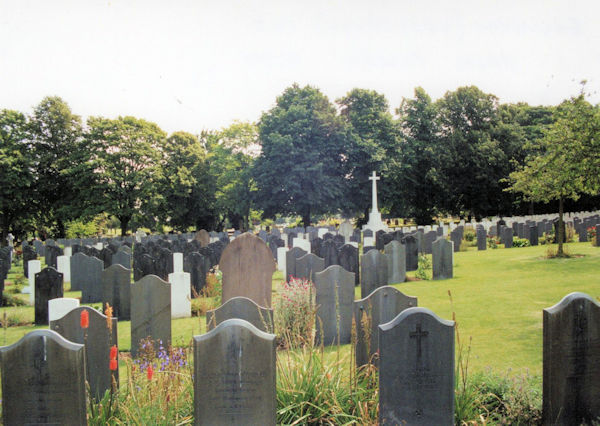Name
Frederick James Timms
21st January 1897
Conflict
First World War
Date of Death / Age
27/05/1915
18
Rank, Service Number & Service Details
Ordinary Signalman
J/24187
Royal Navy
H.M.S. Princess Irene
Awards: Service Medals/Honour Awards
Not Yet Researched
Cemetery/Memorial: Name/Reference/Country
GILLINGHAM (WOODLANDS) CEMETERY, KENT
Naval. 19. 987.
United Kingdom
Headstone Inscription
Not Researched
UK & Other Memorials
Abbots Langley Village Memorial(*1), Not on the Bushey memorials, Not on the Watford memorials(*2), Dockyard Church, Sheerness
Pre War
Born in Watford on 21 January 1897, Frederick James Timms was the eldest son of Frederick (Snr.) and Rosina (nee Cobb) Timms. His parents were married in Bushey on 17 August 1895. They had nine children, one of whom died in infancy. The father was born in Aldenham Rosina came from Bushey and their three youngest children were born there, so the family may have lived in Bushey for a few years.
At the 1901 census, Frederick was four years old and living at 122 St Albans Road in Watford with his parents and two siblings: eight-year-old Florence and two-year-old George. Frederick (Snr.) and Rosina were 26 and 24 years old respectively and Frederick (Snr.) was employed as a cowman on a farm. Also present were Rosina’s 14-year-old younger brother, George Cobb, and two boarders named George Hill and George Whitlock. Birthplaces were given as Aldenham in Hertfordshire for Frederick (Snr.), Bushey in Hertfordshire for Rosina and Florence and George (Cobb) and Watford for Frederick and George (Timms).
At the 1911 census, the family were living at 51 York Road in Watford. Frederick (Snr.) was still working as a farm labourer and Frederick, now aged 15, was employed as a blacksmith’s labourer. The record shows that by that time Frederick (Srn.) and Rosina had nine children, one of whom had died in infancy. In addition to Frederick, the children present were Beatrice, Sidney, William, Edith and Charles, who were 9, 7, 4, 3 and 2 years old respectively. Birthplaces for the children were given as Watford for Frederick, Beatrice and Sidney and Bushey for William, Edith and Charles.
The National Roll of the Great War recorded that he volunteered at the outbreak of war and was posted to HMS “Princess Irene”, a ship originally built in 1914 as an ocean liner but requisitioned by the Royal Navy and following conversion was pressed into War service as an auxiliary minelayer. Aboard this vessel he was engaged on patrol duties, mainly in the North Sea.
The Register of Seamen Services lists Frederick James Timms joining HMS Ganges, a boys’ training establishment, as a boy sailor on 18 April 1913. He was 5 feet 4¾ inches tall, with brown hair, blue eyes and a fresh complexion. He trained as a boy signaller between 23 November 1913 and 31 July 1914 and on completion was recorded as being of very good conduct and of satisfactory ability.
Wartime Service
Frederick joined the Royal Navy as Ordinary Signalman J/24187.
Frederick then served as Ordinary Signalman J.24187 aboard the cruiser HMS Queen Latona between 21 January 1915 and 8 March 1915 when he was transferred to HMS Princess Irene. He served as Ordinary Signalman on the Princess Irene until his death on board the “Princess Irene” aged 19, on 27th May 1915.
The steamship Princess Irene was built for the Canadian Pacific Railway Company for their luxurious "Triangle Route" linking Vancouver, Victoria and the American city of Seattle. In 1914, before she was able to leave for the Pacific, she was requisitioned by the Royal Navy and converted into a Minelayer. Based at Sheerness in Kent
On 27th May 1915 “Princess Irene” was moored off Sheerness in Kent and was being loaded with mines before proceeding on a minelaying mission. At 11.14, without warning, the ship exploded and disintegrated. Two columns of flame shot over three hundred feet into the air. Two barges alongside the “Princess Irene” were also destroyed, and 273 crew and 76 dockyard workers were killed. On the nearby Isle of Grain a girl of nine was killed by flying debris and a farmhand died of shock. Wreckage was flung up to twenty miles away, with people near Sittingbourne being injured by flying debris, and a case of butter landed in Rainham, six miles away across the River Thames. Severed heads were later found on the Isle of Grain, where a ten ton section of the ship landed on the Admiralty’s oil storage tanks, causing damage. The sole survivor of the “Princess Irene” was a stoker, who suffered severe burns.
One of the Chatham Dockyard workers, David Wills, amazingly survived the explosion but few bodies were found.
The victims, whose bodies were recovered, were buried at Woodlands Road Cemetery, Gillingham – Frederick in grave 987.
A Court of Inquiry confirmed that the disaster was not the result of sabotage and discovered that the priming of the mines had been carried out hurriedly and by untrained personnel, and a faulty primer was blamed for the explosion.
A memorial to those lost in the disaster is situated opposite Sheerness Railway Station.
Biography
Additional Information
His mother, living at 121 Whippendell Road, Watford, was notified of his death.
In 1921 a memorial was erected at the Dockyard Church, Sheerness, and Frederick Timms was commemorated there. His brother George and brother in law Arthur Reginald Bennett both survived in the River Medway on 27th May 1915 when she blew up as a result of a catastrophic internal explosion. There was only one survivor. The ship had a complement of 225 officers and men, three of whom were ashore that morning as the mines were being primed on the ship's two mine-decks. Also on board was a party of 80 or so Petty Officers from Chatham, in addition to 76 Sheerness Dockyard workers who were completing tasks prior to the ship's planned departure to lay her mines on 29th May.
Dianne Payne - www.busheyworldwarone.org.uk, Jonty Wild, Blown to Eternity - The Princess Irene story (Ferry Publications) by John Hendy.
*1 *1 Added to memorial in 2019.
*2 Records found have recorded his birthplace as Watford. This may be the case, however Watford was the main postal location given for nearby villages and hamlets, so it may be that this information is misleading. If more accurate information found this will be updated.
Acknowledgments
Andrew Palmer
Dianne Payne - www.busheyworldwarone.org.uk, Jonty Wild, Roger Yapp - www.backtothefront.org



